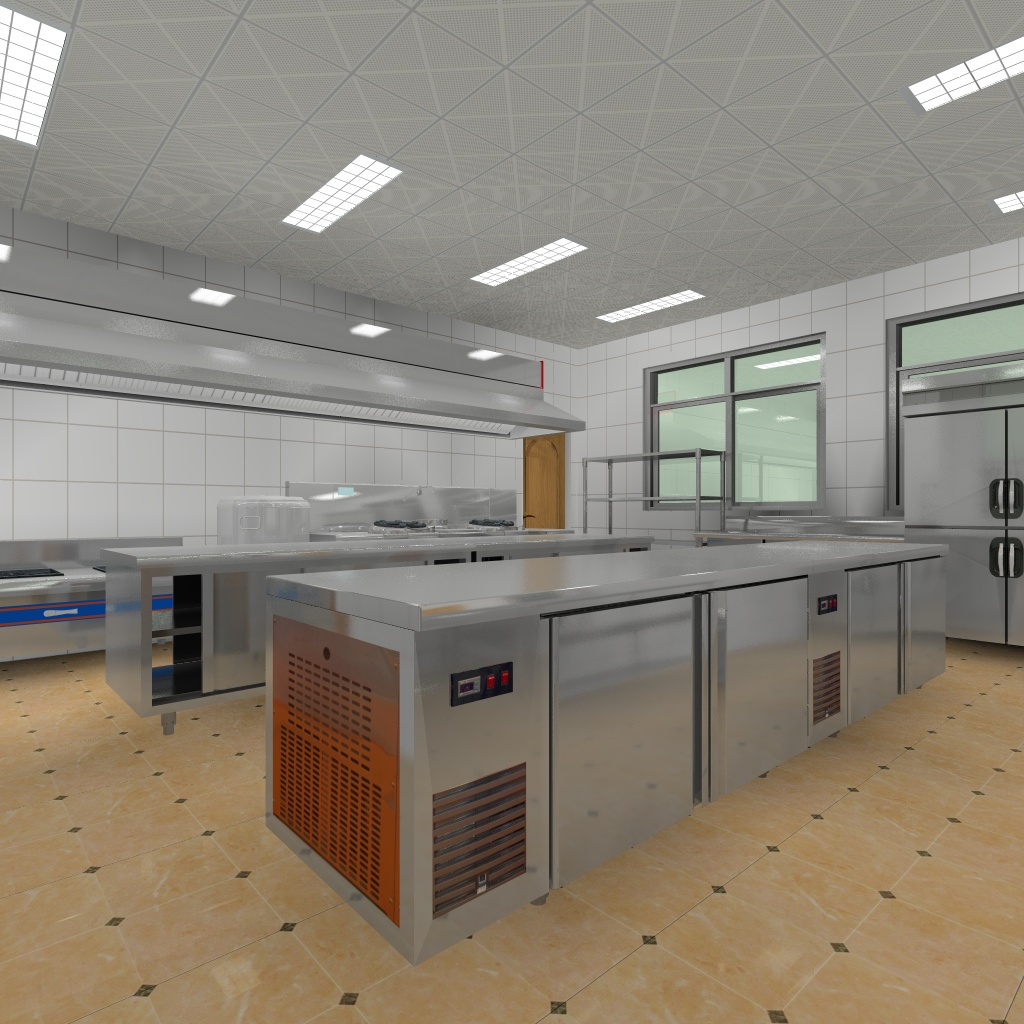1,Principles for selecting key functional areas for kitchen smoke exhaust and air supply
Design and configure different smoke exhaust hoods based on the performance of kitchen equipment, that is, the equipment emits oil smoke and heat, and conduct local ventilation design. In the same area, the arrangement of the stove should not affect the operation process, and heavy equipment with high oil smoke emissions should be placed in the middle as much as possible.
The key functional rooms for kitchen exhaust and heat dissipation mainly include cooking rooms (hot processing rooms), barbecue rooms, and pastry rooms. The main areas for exhaust and heat dissipation include cooking rooms and dishwashing rooms
As the core part of commercial kitchens, Xifujian is the main venue for cooking activities such as stir frying, frying, and Italian grilling. It generates a large amount of cooking fumes and is also a concentrated production area for kitchen pollutants. Indoor thermal comfort and air quality are the worst, and pollutant emissions are also the most severe. Oil screen hood or water mist hood should be selected and treated with an oil fume purifier before being discharged into the atmosphere.
The steam box in the steaming and cooking room, as well as the rice steamer and dishwashing machine in the dishwashing room, generate a large amount of steam and heat. The gas collection hood is selected to be directly discharged to the outdoor through a fan, and a purifier is generally not required
According to hygiene and epidemic prevention requirements, cold dish rooms, meal preparation rooms, and dessert rooms should be equipped with independent air conditioning in addition to changing rooms.
2. System partitioning principles
The system design and division should be combined with the owner's investment direction, investment budget, energy efficiency, energy consumption, operating costs, production processes, etc., to ultimately determine the most suitable, scientific, and reasonable solution.
According to the usage function of the stove and the basic consistency of the normal usage period, the exhaust system should be divided. The exhaust air of equipment in the same functional room should be designed in the same system as much as possible. However, for smoke hoods that are too long (such as 12m or more), it is considered to set up two or more exhaust fans separately and set up corresponding air supply (makeup) systems. In this way, not only is it convenient to operate, but also because it operates separately according to the usage situation, it will not cause the uneconomical phenomenon of having to turn on a high-power range hood or several range hoods running simultaneously even if some stoves are used, reducing operating costs. For different functions, such as equipment exhaust that are close to each other and have the same usage period, it can be designed in the same system to save investment and energy
In addition, the local ventilation and comprehensive ventilation systems should be designed and operated separately to avoid the uneconomical use of local ventilation when the stove is not working and preparation and hygiene cleaning work are also carried out. Principles for determining air volume and designing wind speed
The exhaust volume of the kitchen consists of two parts: local exhaust volume and comprehensive exhaust volume. The local exhaust air volume should be determined based on the type and quantity of selected stoves and other equipment, as well as the type of smoke exhaust hood, etc., that is, according to the layout plan of the stoves and other equipment, the type of smoke hood, the method of removing oil smoke from the range hood, and the intensity of oil smoke generated by the equipment
Determine. According to the "Emission Standards for Cooking Oil Fumes", the heating power corresponding to each benchmark stove is 1.67x10SJ/h, and the projection area of the corresponding exhaust hood stove surface is 1.1m. The benchmark exhaust volume of each large, medium, and small stove is 2000/h. However, the ventilation requirements vary among different cuisines, such as Western cuisine having relatively less cooking fumes and Chinese cuisine having more cooking fumes. special


